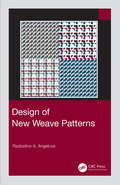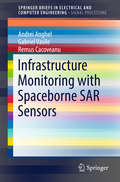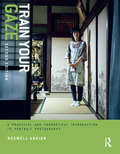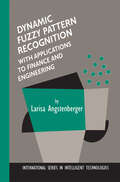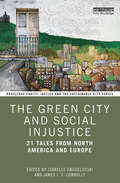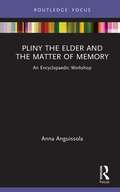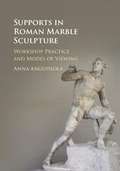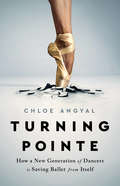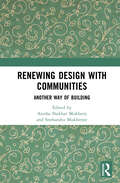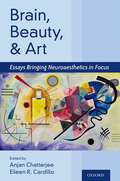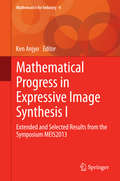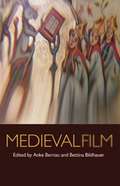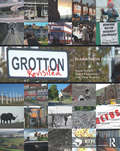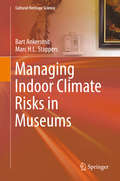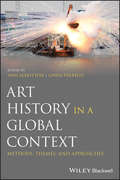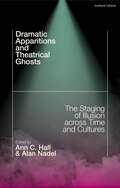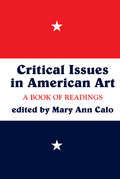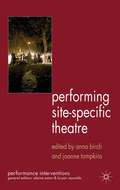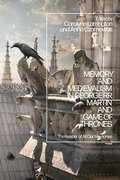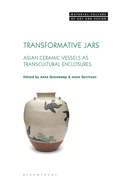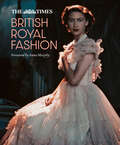- Table View
- List View
Design of New Weave Patterns
by Radostina A. AngelovaThis book presents a systematic study on methods used for the creation of weave patterns for simple structures. Firstly, it explains known techniques for designing new weave patterns classified as patterns merge, motifs, patterns insertion and change of the displacement number. These are discussed as possibilities to create different textures and weaving effects supported by figures of patterns, colour view, and fabric appearance simulation. Secondly, it explains original methods for design of new weave patterns based on Boolean operations, musical scores, written texts and braille alphabet, including transformations performed, advantages/disadvantages, possible applications and designs.
Infrastructure Monitoring with Spaceborne SAR Sensors (SpringerBriefs in Electrical and Computer Engineering)
by Andrei Anghel Gabriel Vasile Remus CacoveanuThis book presents a novel non-intrusive infrastructure monitoring technique based on the detection and tracking of scattering centers in spaceborne SAR images. The methodology essentially consists of refocusing each available SAR image on an imposed 3D point cloud associated to the envisaged infrastructure element and identifying the reliable scatterers to be monitored by means of four dimensional (4D) tomography. The methodology described in this book provides a new perspective on infrastructure monitoring with spaceborne SAR images, is based on a standalone processing chain, and brings innovative technical aspects relative to conventional approaches. The book is intended primarily for professionals and researchers working in the area of critical infrastructure monitoring by radar remote sensing.
Train Your Gaze: A Practical and Theoretical Introduction to Portrait Photography
by Roswell AngierFocusing on the presence of the photographer’s gaze as an integral part of constructing meaningful images, Roswell Angier combines theory and practice, to provide you with the technical advice and inspiration you need to develop your skills in portrait photography.Fully updated to take into account advances in creative work and photographic technology, this second edition also includes stunning new visuals and a discussion on the role of social media in the practice of portraiture.Each chapter includes a practical assignment, designed to help you explore various kinds of portrait photography and produce a range of different styles for your creative portfolio.
Train Your Gaze: A Practical and Theoretical Introduction to Portrait Photography
by Roswell AngierFocusing on the presence of the photographer’s gaze as an integral part of constructing meaningful images, Roswell Angier combines theory and practice, to provide you with the technical advice and inspiration you need to develop your skills in portrait photography.Fully updated to take into account advances in creative work and photographic technology, this second edition also includes stunning new visuals and a discussion on the role of social media in the practice of portraiture.Each chapter includes a practical assignment, designed to help you explore various kinds of portrait photography and produce a range of different styles for your creative portfolio.
Dynamic Fuzzy Pattern Recognition with Applications to Finance and Engineering (International Series in Intelligent Technologies #17)
by Larisa AngstenbergerDynamic Fuzzy Pattern Recognition with Applications to Finance and Engineering focuses on fuzzy clustering methods which have proven to be very powerful in pattern recognition and considers the entire process of dynamic pattern recognition. This book sets a general framework for Dynamic Pattern Recognition, describing in detail the monitoring process using fuzzy tools and the adaptation process in which the classifiers have to be adapted, using the observations of the dynamic process. It then focuses on the problem of a changing cluster structure (new clusters, merging of clusters, splitting of clusters and the detection of gradual changes in the cluster structure). Finally, the book integrates these parts into a complete algorithm for dynamic fuzzy classifier design and classification.
The Green City and Social Injustice: 21 Tales from North America and Europe (Routledge Equity, Justice and the Sustainable City series)
by Isabelle Anguelovski James J. T. ConnollyThe Green City and Social Injustice examines the recent urban environmental trajectory of 21 cities in Europe and North America over a 20-year period. It analyses the circumstances under which greening interventions can create a new set of inequalities for socially vulnerable residents while also failing to eliminate other environmental risks and impacts. Based on fieldwork in ten countries and on the analysis of core planning, policy and activist documents and data, the book offers a critical view of the growing green planning orthodoxy in the Global North. It highlights the entanglements of this tenet with neoliberal municipal policies including budget cuts for community initiatives, long-term green spaces and housing for the most fragile residents; and the focus on large-scale urban redevelopment and high-end real estate investment. It also discusses hopeful experiences from cities where urban greening has long been accompanied by social equity policies or managed by community groups organizing around environmental justice goals and strategies. The book examines how displacement and gentrification in the context of greening are not only physical but also socio-cultural, creating new forms of social erasure and trauma for vulnerable residents. Its breadth and diversity allow students, scholars and researchers to debunk the often-depoliticized branding and selling of green cities and reinsert core equity and justice issues into green city planning—a much-needed perspective. Building from this critical view, the book also shows how cities that prioritize equity in green access, in secure housing and in bold social policies can achieve both environmental and social gains for all.
Pliny the Elder and the Matter of Memory: An Encyclopaedic Workshop (Young Feltrinelli Prize in the Moral Sciences)
by Anna AnguissolaThe Roman official and intellectual Pliny the Elder’s Natural History constitutes our primary source on the figural arts in Classical antiquity. Since the Middle Ages, Pliny’s encyclopaedia has enraptured the imaginations of its readers with anecdotes and narratives about the lives and accomplishments of the great artists of the Greek past. This book explores the ways in which materials and artistic processes are constructed in Natural History. In doing so, this work reflects current developments in the study of Graeco-Roman art, where the scientific analysis of sculptural stones, pigments, and metal alloys, as well as a more detailed understanding of technologies and workshop practices, has imposed radical changes in the methods and theoretical models used to approach ancient artefacts. The argument considers the role of materials in discourses on Nature, as well as their semantics and the language used to account for artistic creation. Discussion of artistic techniques addresses the discovery of resources and technologies, and the discursive implications of creation and viewing. By focusing on particular passages and exemplary case studies, this book explores the ideological, moral, and intellectual preoccupations that guide Pliny’s construction of materialities and human ingenuity in a period characterised by a rapidly-evolving economic landscape. The material and performative aspects of artistic, manual creation provided this early encyclopaedist with the fundaments for constructing and explaining his view of Rome’s imperial mission and, more specifically, of his own strategies as a collector and recorder of ‘all’ the memorable facts of Nature. This book will be of significant interest to scholars of classical archaeology, Greek and Latin literature, social and economic history, and reception studies.
Pliny the Elder and the Matter of Memory: An Encyclopaedic Workshop (Young Feltrinelli Prize in the Moral Sciences)
by Anna AnguissolaThe Roman official and intellectual Pliny the Elder’s Natural History constitutes our primary source on the figural arts in Classical antiquity. Since the Middle Ages, Pliny’s encyclopaedia has enraptured the imaginations of its readers with anecdotes and narratives about the lives and accomplishments of the great artists of the Greek past. This book explores the ways in which materials and artistic processes are constructed in Natural History. In doing so, this work reflects current developments in the study of Graeco-Roman art, where the scientific analysis of sculptural stones, pigments, and metal alloys, as well as a more detailed understanding of technologies and workshop practices, has imposed radical changes in the methods and theoretical models used to approach ancient artefacts. The argument considers the role of materials in discourses on Nature, as well as their semantics and the language used to account for artistic creation. Discussion of artistic techniques addresses the discovery of resources and technologies, and the discursive implications of creation and viewing. By focusing on particular passages and exemplary case studies, this book explores the ideological, moral, and intellectual preoccupations that guide Pliny’s construction of materialities and human ingenuity in a period characterised by a rapidly-evolving economic landscape. The material and performative aspects of artistic, manual creation provided this early encyclopaedist with the fundaments for constructing and explaining his view of Rome’s imperial mission and, more specifically, of his own strategies as a collector and recorder of ‘all’ the memorable facts of Nature. This book will be of significant interest to scholars of classical archaeology, Greek and Latin literature, social and economic history, and reception studies.
Supports In Roman Marble Sculpture: Workshop Practice And Modes Of Viewing (PDF)
by Anna AnguissolaFigural and non-figural supports are a ubiquitous feature of Roman marble sculpture; they appear in sculptures ranging in size from miniature to colossal and of all levels of quality. At odds with modern ideas about beauty, completeness, and visual congruence, these elements, especially non-figural struts, have been dismissed by scholars as mere safeguards for production and transport. However, close examination of these features reveals the tastes and expectations of those who commissioned, bought, and displayed marble sculptures throughout the Mediterranean in the Hellenistic and Roman periods. Drawing on a large body of examples, Greek and Latin literary sources, and modern theories of visual culture, this study constitutes the first comprehensive investigation of non-figural supports in Roman sculpture. The book overturns previous conceptions of Roman visual values and traditions and challenges our understanding of the Roman reception of Greek art.
Turning Pointe: How a New Generation of Dancers Is Saving Ballet from Itself
by Chloe AngyalA reckoning with one of our most beloved art forms, whose past and present are shaped by gender, racial, and class inequities—and a look inside the fight for its future Every day, in dance studios all across America, legions of little children line up at the barre to take ballet class. This time in the studio shapes their lives, instilling lessons about gender, power, bodies, and their place in the world both in and outside of dance. In Turning Pointe, journalist Chloe Angyal captures the intense love for ballet that so many dancers feel, while also grappling with its devastating shortcomings: the power imbalance of an art form performed mostly by women, but dominated by men; the impossible standards of beauty and thinness; and the racism that keeps so many people of color out of ballet. As the rigid traditions of ballet grow increasingly out of step with the modern world, a new generation of dancers is confronting these issues head on, in the studio and on stage. For ballet to survive the twenty-first century and forge a path into a more socially just future, this reckoning is essential.
Renewing Design with Communities: Another Way of Building
by Anisha Shekhar Mukherji and Snehanshu MukherjeeThis book looks at alternative ways of analyzing traditional and contemporary architectural design and building practices in South Asia with a special focus on India. It showcases how collaborative projects between architects and local communities and drawing from local building traditions can lead to sustainable and equitable practices in architecture. The volume includes an analysis of projects in rural, tribal, and urban areas of India and Nepal and first-hand accounts of architects, teachers, and professionals engaged in the theory and practice of design and architecture. It examines the differences between the individualistic and the collective approach and explores the meaning of architecture as a process and as a product and as a decentralized, ecologically, and locally sensitive way of designing. While comparing traditional and modern methods of building, it also examines the impact of each method on the community, the economy and the surrounding environment. This book will be of interest to researchers and students of architecture, urban studies, urban planning, urban ecology, urban geography, and sustainable development. It will also be useful for architects, planners, urban designers, and professionals associated with these disciplines.
Brain, Beauty, and Art: Essays Bringing Neuroaesthetics into Focus
by Anjan Chatterjee and Eileen R. CardilloAesthetics has long been the preserve of philosophy, art history, and the creative arts but, more recently, the fields of psychology and neuroscience have entered the discussion, and the field of neuroaesthetics has been born. In Brain, Beauty, and Art, leading scholars in this nascent field reflect on the promise of neuroaesthetics to enrich our understanding of this universal yet diverse facet of human experience. The volume consists of essays from foundational researchers whose empirical work launched the field. Each essay is anchored to an original, peer-reviewed paper from the short history of this new and burgeoning subdiscipline of cognitive neuroscience. Authors of each essay were asked three questions: 1) What motivated the original paper? 2) What were the main findings or theoretical claims made? and, 3) How do those findings or claims fit with the current state and anticipated near future of neuroaesthetics? Together, these essays establish the territory and current boundaries of neuroaesthetics and identify its most promising future directions. Topics include models of neuroaesthetics, and discussions of beauty, art, dance, music, literature, and architecture. Brain, Beauty, and Art will inform and stimulate anyone with an abiding interest in why it is that, across time and culture, we respond to beauty, engage with art, and are affected by music and architecture.
Mathematical Progress in Expressive Image Synthesis I: Extended and Selected Results from the Symposium MEIS2013 (Mathematics for Industry #4)
by Ken AnjyoThis book presents revised versions of the best papers selected from the symposium “Mathematical Progress in Expressive Image Synthesis” (MEIS2013) held in Fukuoka, Japan, in 2013. The topics cover various areas of computer graphics (CG), such as surface deformation/editing, character animation, visual simulation of fluids, texture and sound synthesis and photorealistic rendering. From a mathematical point of view, the book also presents papers addressing discrete differential geometry, Lie theory, computational fluid dynamics, function interpolation and learning theory. This book showcases the latest joint efforts between mathematicians, CG researchers and practitioners exploring important issues in graphics and visual perception.The book provides a valuable resource for all computer graphics researchers seeking open problem areas, especially those now entering the field who have not yet selected a research direction.
Medieval film
by Anke Bernau and Bettina BildhauerMedieval film explores theoretical questions about the ideological, artistic, emotional and financial investments inhering in cinematic renditions of the medieval period. What does it mean to create and watch a 'medieval film'? What is a medieval film and why are they successful? This is the first work that attempts to answer these questions, drawing, for instance, on film theory, postcolonial theory, cultural studies and the growing body of work on medievalism. Contributors investigate British, German, Italian, Australian, French, Swedish and American film, exploring topics such translation, temporality, film noir, framing and period film - and find the medieval lurking in inexpected corners. In addition it provides in-depth studies of individual films from different countries including The Birth of a Nation to Nosferatu, and Robin Hood: Prince of Thieves. Medieval Film will be of interest to medievalists working in disciplines including literature, history, to scholars working on film and in cultural studies. It will also be of interest to undergraduates, postgraduates and to an informed enthusiast in film or/and medieval culture.
The Cultures of Entanglement: On Nonhuman Life Forms in Contemporary Art (Image #233)
by Suzanne Anker Sabine FlachThe symbolic meaning of plants, their relevance to religion and the metaphorical provocations in the order of knowledge, culture and political power underline the role of plants as something more than passive objects. Current theoretical and artistic discourses have been seeking access to the world independently of man by focusing on the nonhuman other. The contributors to this volume examine the historical, philosophical and scientific findings that generate this idea. In what way are such perspectives manifest in contemporary art? Do artists develop a particular approach that enables nonhuman life forms like plants, insects or animals to have an impact?
Grotton Revisited: Planning in Crisis? (RTPI Library Series)
by Steve Ankers David Kaiserman Chris ShepleySome thirty years ago the small Metropolitan County of Grotton found itself bathed in the bright glare of publicity as The Grotton Papers lifted the lid on the inner workings of the six planning departments of this hitherto little remarked corner of England. The intervening years have seen Grotton's County Council aim at the admirable and mostly achievable target of becoming "average with moderate prospects of remaining average" in the Government rankings, and the struggles of the District Councils to come to terms with planning in the late twentieth – let alone twenty-first – century are once again under the spotlight. The original authors of The Grotton Papers have come together once more to offer an experienced and surprisingly unjaundiced look at the way the British planning system works. Their comprehensive survey allows real lessons to be learnt from what Grotton has – and just as importantly hasn't – done since they were last in town. Grotton Revisited is without doubt the finest (and indeed the only) satirical book on this vitally important subject. It is suitable for planners of all ages and abilities, and will be essential reading for anyone who has ever had contact with the planning system, or thinks they may know someone who has. First class entertainment and education for professionals and general readers alike. Published in association with the RTPI.
Grotton Revisited: Planning in Crisis? (RTPI Library Series)
by Steve Ankers David Kaiserman Chris ShepleySome thirty years ago the small Metropolitan County of Grotton found itself bathed in the bright glare of publicity as The Grotton Papers lifted the lid on the inner workings of the six planning departments of this hitherto little remarked corner of England. The intervening years have seen Grotton's County Council aim at the admirable and mostly achievable target of becoming "average with moderate prospects of remaining average" in the Government rankings, and the struggles of the District Councils to come to terms with planning in the late twentieth – let alone twenty-first – century are once again under the spotlight. The original authors of The Grotton Papers have come together once more to offer an experienced and surprisingly unjaundiced look at the way the British planning system works. Their comprehensive survey allows real lessons to be learnt from what Grotton has – and just as importantly hasn't – done since they were last in town. Grotton Revisited is without doubt the finest (and indeed the only) satirical book on this vitally important subject. It is suitable for planners of all ages and abilities, and will be essential reading for anyone who has ever had contact with the planning system, or thinks they may know someone who has. First class entertainment and education for professionals and general readers alike. Published in association with the RTPI.
Managing Indoor Climate Risks in Museums (Cultural Heritage Science)
by Bart Ankersmit Marc H.L. StappersThis book elaborates on different aspects of the decision making process concerning the management of climate risk in museums and historic houses. The goal of this publication is to assist collection managers and caretakers by providing information that will allow responsible decisions about the museum indoor climate to be made. The focus is not only on the outcome, but also on the equally important process that leads to that outcome. The different steps contribute significantly to the understanding of the needs of movable and immovable heritage. The decision making process to determine the requirements for the museum indoor climate includes nine steps: Step 1. The process to make a balanced decision starts by clarifying the decision context and evaluating what is important to the decision maker by developing clear objectives. In Step 2 the value of all heritage assets that are affected by the decision are evaluated and the significance of the building and the movable collection is made explicit. Step 3. The climate risks to the moveable collection are assessed. Step 4: Those parts of the building that are considered valuable and susceptible to certain climate conditions are identified. Step 5. The human comfort needs for visitors and staff are expressed. Step 6: To understand the indoor climate, the building physics are explored. Step 7. The climate specifications derived from step 3 to 5 are weighed and for each climate zone the optimal climate conditions are specified. Step 8: Within the value framework established in Step 1, the options to optimize the indoor climate are considered and selected. Step 9: All options to reduce the climate collection risks are evaluated by the objectives established in Step 1.
Art History in a Global Context: Methods, Themes, and Approaches
by Ann Albritton and Gwen FarrellyPresents a clear and comprehensive introduction to the evolving discipline of global art studies This volume examines how art historians, critics, and artists revisit art from ancient times through to the early modern period as well as the ways in which contemporary objects are approached through the lens of global contact, exchange, networks, and trade routes. It assists students who actively seek to understand "global art history" and the discipline beyond the founding Western canons. The first section of Art History in a Global Context: Methods, Themes and Approaches explores how themes related to globalization are framing the creation, circulation, reception, and study of art today. The second section examines how curators, scholars, artists, and critics have challenged the Eurocentric canon through works of art, writings, exhibitions, biennials, large-scale conferences, and the formation of global networks. The third section is designed to help students look forward by exploring how art history in a global context is beginning to extend beyond the contemporary condition to understand the meaning, conditions, and impacts of exchange across borders and among artists in earlier periods. Presents a historiography of global art histories in academic, museological, and exhibition projects Written by a collection of authors from different linguistic, cultural, geographic, generational, and disciplinary perspectives Aids students in understanding “global art history” and the discipline beyond the founding Western canons Provides a set of case studies to bring to life methodologies being employed in the field Features contributors from the program of the Getty Foundation and the College Art Association International Committee’s project Art History in a Global Context is an ideal choice for upper-level undergraduate and entry level graduate art students. It can also be used as a teaching tool, or as models for case studies in different formats.
Dramatic Apparitions and Theatrical Ghosts: The Staging of Illusion across Time and Cultures
by Ann C. Hall and Alan NadelGhosts haunt the stages of world theatre, appearing in classical Greek drama through to the plays of 21st-century dramatists. Tracing the phenomenon across time and in different cultures, the chapters collected here examine their representation, dramatic function, and what they may tell us about the belief systems of their original audiences and the conditions of theatrical production. As illusions of illusions, they foreground many dramatic themes common to a wide variety of periods and cultures. Arranged chronologically, this collection examines how ghosts represent political change in Athenian culture in three plays by Aeschylus; their function in traditional Japanese drama; the staging of the supernatural in the dramatic liturgy of the early Middle Ages; ghosts within the dramatic works of Middleton, George Peele, and Christopher Marlowe, and the technologies employed in the 18th and 19th centuries to represent the supernatural on stage. Coverage of the dramatic representation of ghosts in the 20th and 21st centuries includes studies of Noël Coward's Blithe Spirit, August Wilson's Pittsburgh Cycle, plays by Sam Shepard, David Mamet, and Sarah Ruhl, Paddy Chayefsky's The Tenth Man, Suzan-Lori Parks' Topdog/Underdog, and the spectral imprint of Shakespeare's ghosts in the Irish drama of Marina Carr, Martin McDonagh, William Butler Yeats, and Samuel Beckett. The volume closes by examining three contemporary American indigenous plays by Anishinaabe author, Alanis King.
Critical Issues In American Art: A Book Of Readings
by Mary Ann CaloThis anthology of essays on different critical approaches and methodologies for the analysis and interpretation of American art and artists is designed for students and teachers in American art history and American studies programs. It contains twenty selections from academic journals on American art from colonial times to 1940. Mary Ann Calo provides an introduction to the anthology, explaining its purpose and organization, and each selection has a brief introduction about its main focus and scholarly approach. These case studies show the diversity of scholarly thinking about interpreting American works of art, which should be useful for teachers and comprehensible and interesting for students.This anthology contains twenty articles on American art from colonial times to 1940. The selections are mainly from academic journals and aim to provide the student and teacher with different critical approaches and methodologies for the analysis and interpretation of American art and artists. Mary Ann Calo's preface to the anthology explains its purpose and organization, and each article will have a brief introduction about its main focus and scholarly approach.This text meets the need in American art history studies for an anthology of essays on critical approaches and methodologies.
Performing Site-Specific Theatre: Politics, Place, Practice (Performance Interventions)
by Anna Birch & Joanne TompkinsThis book investigates the expanding parameters for site-specific performance to account for the form's increasing popularity in the twenty-first century. Leading practitioners and theorists interrogate issues of performance and site to broaden our understanding of the role that place plays in performance and the ways that performance influences it
Memory and Medievalism in George RR Martin and Game of Thrones: The Keeper of All Our Memories
by Anna Czarnowus and Carolyne LarringtonThis book explores the connections between history and fantasy in George RR Martin's immensely popular book series 'A Song of Ice and Fire' and the international TV sensation HBO TV's Game of Thrones. Acknowledging the final season's foregrounding of the cultural centrality of history, truth and memory in the confrontation between Bran and the Night King, the volume takes full account of the TV show's conclusion in its multiple readings across from medieval history, its institutions and practices, as depicted in the books to the show's own particular medievalism. The topics under discussion include the treatment of the historical phenomena of chivalry, tournaments, dreams, models of education, and the supernatural, and the different ways in which these are mediated in Martin's books and the TV show. The collection also includes a new study of one of Martin's key sources, Maurice Druon's Les Rois Maudits, in-depth explorations of major characters in their medieval contexts, and provocative reflections on the show's controversial handling of gender and power politics.Written by an international team of medieval scholars, historians, literary and cultural experts, bringing their own unique perspectives to the multiple societies, belief-systems and customs of the 'Game of Thrones' universe, Memory and Medievalism in George RR Martin and Game of Thrones offers original and sparky insights into the world-building of books and show.
Transformative Jars: Asian Ceramic Vessels as Transcultural Enclosures (Material Culture of Art and Design)
by Anna Grasskamp and Anne GerritsenThe term 'jar' refers to any man-made shape with the capacity to enclose something. Few objects are as universal and multi-functional as a jar – regardless of whether they contain food or drink, matter or a void, life-giving medicine or the ashes of the deceased. As ubiquitous as they may seem, such containers, storage vessels and urns are, as this book demonstrates, highly significant cultural and historical artefacts that mediate between content and environment, exterior worlds and interior enclosures, local and global, this-worldly and otherworldly realms. The contributors to this volume understand jars not only as household utensils or evidence of human civilizations, but also as artefacts in their own right. Asian jars are culturally and aesthetically defined crafted goods and as objects charged with spiritual meanings and ritual significance. Transformative Jars situates Asian jars in a global context and focuses on relationships between the filling, emptying and re-filling of jars with a variety of contents and meanings through time and throughout space. Transformative Jars brings together an interdisciplinary team of scholars with backgrounds in curating, art history and anthropology to offer perspectives that go beyond archaeological approaches with detailed analyses of a broad range of objects. By looking at jars as things in the hands of makers, users and collectors, this book presents these objects as agents of change in cultures of craftsmanship and consumption.
The Times British Royal Fashion
by Anna Murphy and Jane EastoeLong before Lady Diana’s couture of revenge took the world by storm, or Princess Anne cemented herself as a Gen Z icon, there has been a well-documented fascination with members of the Royal Family and the significance behind their style.
